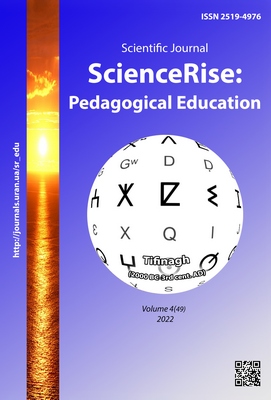Educational example of masking textual information in a photographic signal
DOI:
https://doi.org/10.15587/2519-4984.2022.261051Keywords:
Python, Pillow, steganography, hiding, masking information in file, educational exampleAbstract
The paper presents a steganographic method of masking textual information in photo files. Concealment is implemented in Python. The introduction of individual letters of the text into the image is carried out by the method of "least significant bit". The program can be used for both educational and practical purposes. The Pillow graphics library was used to implement the program. This is not a specialized library for steganographic needs. The use of this library makes it possible to visualize the mechanism of hiding information in the lessons, while the conciseness of the program code gives the possibility to demonstrate it in the classroom setting. It is also important for educational purposes, that working within the Pillow library allows you to see the state of an empty and filled container at the level of individual bits. To assess the practical value of the program, it was tested with texts of different lengths and with containers (photographs) of various kinds. The experiment showed the correct reproduction of texts. Careful visual examination of the empty and correspondingly filled containers (photographs) revealed no differences or suspicions of text bookmarks. Of course, if the party who intercepted the masked message has guesses about how the text is hidden, then this text is easily revealed. Therefore, it is obvious, that the use of the program for practical purposes requires additional manipulations in the code, in particular related to the order of implementation of the text and the choice of location.
It is also desirable to additionally encrypt the text with at least a simple method. Such encryption is possible with the usage of a separate program. Analysis of photographs and manipulation with them at the level of individual bits also has educational value in terms of disclosing a method of capturing the corresponding physical signal. The latter gives an explanation of the methods of encoding static images, noise level, the magnitude of the useful physical signal, and the limits of sensitivity of human vision
References
- Bailey, K., Curran, K. (2014). Steganography: The Art of Hiding Information. CreateSpace Independent Publishing Platform.
- Riabko, B. Ia., Fionov, A. N. (2013). Osnovy sovremennoi kriptografii i steganografii. Moscow: Goriachaia liniia Telekom, 232.
- Konakhovych, H. F., Prohonov, D. O., Puzyrenko, O. Yu. (2018). Komp’iuterna stehanohrafichna obrobka y analiz multymediinykh danykh. Kyiv: Tsentr navchalnoi literatury, 558.
- Hegarty, M., Keane, A. (2018). Steganography. The World of Secret Communications, 88.
- Hassabalah, M. (2020). Digital Media Steganography: Principles, Algorithms, and Advances. Academic Press. doi: http://doi.org/10.1016/c2018-0-04865-3
- Tanna, S. (2020). Codes, Ciphers, Steganography & Secret Messages. Answers Limited, 263.
- Wyner, P. (2022). Disappearing Cryptography. Morgan Kaufmann, 295.
- Holovin, M. B., Holovina, N. A. (2021). Navchalnyi pryklad maskuvannia informatsii v akustychnomu syhnali. Naukovi zapysky Berdianskoho derzhavnoho pedahohichnoho universytetu. Seriia: Pedahohichni nauky, 2, 203–211. Available at: https://evnuir.vnu.edu.ua/handle/123456789/19745
- Holovin, N., Holovina, N., Yatsiuk, S., Sachuk, Y. (2020). Protection of information steganographically in python by means of the pillow graphic library. Computer-integrated technologies: education, science, production, 40, 110–115. doi: http://doi.org/10.36910/6775-2524-0560-2020-40-17
- Pillow. Available at: https://pillow.readthedocs.io/en/stable/
Downloads
Published
How to Cite
Issue
Section
License
Copyright (c) 2022 Nina Holovina, Mykola Holovin

This work is licensed under a Creative Commons Attribution 4.0 International License.
Our journal abides by the Creative Commons CC BY copyright rights and permissions for open access journals.
Authors, who are published in this journal, agree to the following conditions:
1. The authors reserve the right to authorship of the work and pass the first publication right of this work to the journal under the terms of a Creative Commons CC BY, which allows others to freely distribute the published research with the obligatory reference to the authors of the original work and the first publication of the work in this journal.
2. The authors have the right to conclude separate supplement agreements that relate to non-exclusive work distribution in the form in which it has been published by the journal (for example, to upload the work to the online storage of the journal or publish it as part of a monograph), provided that the reference to the first publication of the work in this journal is included.








